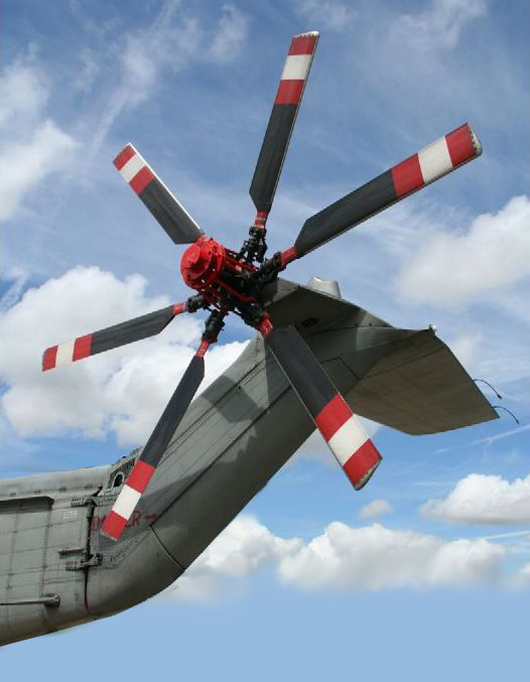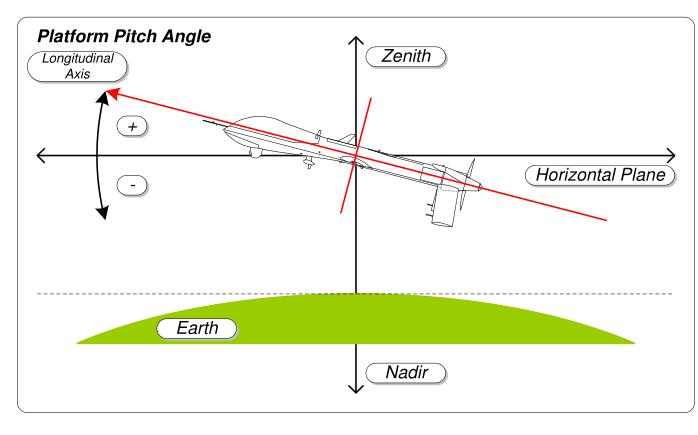|
Boeing X-50
The Boeing X-50A Dragonfly, formerly known as the Canard Rotor/Wing Demonstrator, was a VTOL rotor wing experimental unmanned aerial vehicle that was developed by Boeing and DARPA to demonstrate the principle that a helicopter's rotor could be stopped in flight and act as a fixed wing, enabling it to transition between fixed-wing and rotary-wing flight. The X-50A built upon the work of the Sikorsky S-72 X-Wing program of the 1980s by designing the vehicle as a multi-mode aircraft from the ground up. The X-50A was one of two projects funded by DARPA in its "Heliplane" program. Neither of the two prototype aircraft ever successfully transitioned to full forward flight. DARPA withdrew funding for the X-50 program in late 2006 due to inherent design flaws. Development Boeing initially proposed using the CRW configuration to fill a requirement for a VTOL aircraft suitable for escorting the V-22 tiltrotor. The X-50A was a joint program between Boeing and DARPA, with each paying for ... [...More Info...] [...Related Items...] OR: [Wikipedia] [Google] [Baidu] |
Rotorcraft
A rotorcraft or rotary-wing aircraft is a heavier-than-air aircraft with rotary wings or rotor blades, which generate lift by rotating around a vertical mast. Several rotor blades mounted on a single mast are referred to as a rotor. The International Civil Aviation Organization (ICAO) defines a rotorcraft as "supported in flight by the reactions of the air on one or more rotors". Rotorcraft generally include aircraft where one or more rotors provide lift throughout the entire flight, such as helicopters, autogyros, and gyrodynes. Compound rotorcraft augment the rotor with additional thrust engines, propellers, or static lifting surfaces. Some types, such as helicopters are capable of vertical takeoff and landing. An aircraft which uses rotor lift for vertical flight but changes to solely fixed-wing lift in horizontal flight is not a rotorcraft but a convertiplane. Classes of rotorcraft Helicopter A helicopter is a rotorcraft whose rotors are driven by the engine(s) throughout ... [...More Info...] [...Related Items...] OR: [Wikipedia] [Google] [Baidu] |
Tail Rotor
The tail rotor is a smaller rotor mounted vertically or near-vertically at the tail of a traditional single-rotor helicopter, where it rotates to generate a propeller-like horizontal thrust in the same direction as the main rotor's rotation. The tail rotor's position and distance from the helicopter's center of mass allow it to develop enough thrust leverage to counter the reactional torque exerted on the fuselage by the spinning of the main rotor. Without the tail rotor or other anti-torque mechanisms (e.g. NOTAR), the helicopter would be constantly spinning in the opposite direction of the main rotor when flying. Tail rotors are simpler than main rotors since they require only collective changes in pitch to vary thrust. The pitch of the tail rotor blades is adjustable by the pilot via the anti-torque pedals, which also provide directional control by allowing the pilot to rotate the helicopter around its vertical axis. Its drive system consists of a shaft powered from the mai ... [...More Info...] [...Related Items...] OR: [Wikipedia] [Google] [Baidu] |
Cancelled Aircraft Projects
Cancel or cancellation may refer to: *Flight cancellation and delay, not operating a scheduled flight Sociology * Cancel culture, boycott and ostracism calling out offensive behavior on social media or in real life Technology and science *Cancel leaf, a bibliographic term for replaced leaves in printed books *Cancellation property, the mathematical property if ''a''×''b'' = ''a''×''c'' then ''b'' = ''c'' **Cancelling out, a technique for simplifying mathematical expressions * Catastrophic cancellation, numerical error arising from subtracting approximations to nearby numbers *Noise cancellation, a method for reducing unwanted sound *Phase cancellation, the effect of two waves that are out of phase with each other being summed *Cancel message, a special message used to remove Usenet articles posted to news servers * Cancel character, an indication that transmitted data are in error or are to be disregarded * Resolution rule, in propositional logic a valid inference rule ... [...More Info...] [...Related Items...] OR: [Wikipedia] [Google] [Baidu] |
Boeing Aircraft
The Boeing Company () is an American multinational corporation that designs, manufactures, and sells airplanes, rotorcraft, rockets, satellites, telecommunications equipment, and missiles worldwide. The company also provides leasing and product support services. Boeing is among the largest global aerospace manufacturers; it is the third-largest defense contractor in the world based on 2020 revenue, and is the largest exporter in the United States by dollar value. Boeing stock is included in the Dow Jones Industrial Average. Boeing is incorporated in Delaware. Boeing was founded by William Boeing in Seattle, Washington, on July 15, 1916. The present corporation is the result of the merger of Boeing with McDonnell Douglas on August 1, 1997. Then chairman and CEO of Boeing, Philip M. Condit, assumed those roles in the combined company, while Harry Stonecipher, former CEO of McDonnell Douglas, became president and COO. The Boeing Company's corporate headquarters is in Chicago, Illi ... [...More Info...] [...Related Items...] OR: [Wikipedia] [Google] [Baidu] |
Canard Aircraft
In aeronautics, a canard is a wing configuration in which a small forewing or foreplane is placed forward of the main wing of a fixed-wing aircraft or a weapon. The term "canard" may be used to describe the aircraft itself, the wing configuration, or the foreplane.. Canard wings are also extensively used in guided missiles and smart bombs. The term "canard" arose from the appearance of the Santos-Dumont 14-bis of 1906, which was said to be reminiscent of a duck (''canard'' in French) with its neck stretched out in flight. Despite the use of a canard surface on the first powered aeroplane, the Wright Flyer of 1903, canard designs were not built in quantity until the appearance of the Saab Viggen jet fighter in 1967. The aerodynamics of the canard configuration are complex and require careful analysis. Rather than use the conventional tailplane configuration found on most aircraft, an aircraft designer may adopt the canard configuration to reduce the main wing loading, to better ... [...More Info...] [...Related Items...] OR: [Wikipedia] [Google] [Baidu] |
2000s United States Experimental Aircraft
S, or s, is the nineteenth letter in the Latin alphabet, used in the modern English alphabet, the alphabets of other western European languages and others worldwide. Its name in English is ''ess'' (pronounced ), plural ''esses''. History Origin Northwest Semitic šîn represented a voiceless postalveolar fricative (as in 'ip'). It originated most likely as a pictogram of a tooth () and represented the phoneme via the acrophonic principle. Ancient Greek did not have a phoneme, so the derived Greek letter sigma () came to represent the voiceless alveolar sibilant . While the letter shape Σ continues Phoenician ''šîn'', its name ''sigma'' is taken from the letter ''samekh'', while the shape and position of ''samekh'' but name of ''šîn'' is continued in the '' xi''. Within Greek, the name of ''sigma'' was influenced by its association with the Greek word (earlier ) "to hiss". The original name of the letter "sigma" may have been ''san'', but due to the complica ... [...More Info...] [...Related Items...] OR: [Wikipedia] [Google] [Baidu] |
Unmanned Aerial Vehicles Of The United States
An uncrewed vehicle or unmanned vehicle is a vehicle without a person on board. Uncrewed vehicles can either be under telerobotic control—remote controlled or remote guided vehicles—or they can be autonomously controlled—autonomous vehicles—which are capable of sensing their environment and navigating on their own. Types There are different types of uncrewed vehicles: * Remote control vehicle (RC), such as radio-controlled cars or radio-controlled aircraft * Unmanned ground vehicle (UGV), such as the autonomous cars, or unmanned combat vehicles (UCGV) * Unmanned ground and aerial vehicle (UGAV), unmanned vehicle with hybrid locomotion methods * Unmanned aerial vehicle (UAV), unmanned aircraft commonly known as "drone" ** Unmanned combat aerial vehicle (UCAV) **Medium-altitude long-endurance unmanned aerial vehicle (MALE) ** Miniature UAV (SUAV) ** Delivery drone ** Micro air vehicle (MAV) ** Target drone * Autonomous spaceport drone ship * Uncrewed surface vehicle (USV) ... [...More Info...] [...Related Items...] OR: [Wikipedia] [Google] [Baidu] |
Williams F112
The Williams F112 is a small turbofan engine made by Williams International designed to power cruise missiles. It has been used as the powerplant for the AGM-129 Advanced Cruise Missile and the AGM-86B advanced cruise missile, as well as the experimental X-36 and X-50. Design and development Although Williams originally designed these small turbofans to power target drones while aiming for a contract in the Subsonic Cruise Armed Decoy (SCAD) program, it quickly became apparent that these were valuable tools to be used in the future to power advanced cruise missiles. Originally designated the F107-WR-14A6, then designated the F107-WR-103 by Williams then designated the F112-WR-100 by the USAF. Though the true benefits that the F112 brought to the AGM-129 are classified, it has been said that the F112 increased the range of the AGM-129 to four times that of the AGM-86B. Another benefit is that the infrared heat signature has also been reduced or nearly eliminated, aiding the s ... [...More Info...] [...Related Items...] OR: [Wikipedia] [Google] [Baidu] |
Pitching Moment
In aerodynamics, the pitching moment on an airfoil is the moment (or torque) produced by the aerodynamic force on the airfoil if that aerodynamic force is considered to be applied, not at the center of pressure, but at the aerodynamic center of the airfoil. The pitching moment on the wing of an airplane is part of the total moment that must be balanced using the lift on the horizontal stabilizer. More generally, a pitching moment is any moment acting on the pitch axis of a moving body. The lift on an airfoil is a distributed force that can be said to act at a point called the center of pressure. However, as angle of attack changes on a cambered airfoil, there is movement of the center of pressure forward and aft. This makes analysis difficult when attempting to use the concept of the center of pressure. One of the remarkable properties of a cambered airfoil is that, even though the center of pressure moves forward and aft, if the lift is imagined to act at a point calle ... [...More Info...] [...Related Items...] OR: [Wikipedia] [Google] [Baidu] |
Fuselage
The fuselage (; from the French ''fuselé'' "spindle-shaped") is an aircraft's main body section. It holds crew, passengers, or cargo. In single-engine aircraft, it will usually contain an engine as well, although in some amphibious aircraft the single engine is mounted on a pylon attached to the fuselage, which in turn is used as a floating hull. The fuselage also serves to position the control and stabilization surfaces in specific relationships to lifting surfaces, which is required for aircraft stability and maneuverability. Types of structures Truss structure This type of structure is still in use in many lightweight aircraft using welded steel tube trusses. A box truss fuselage structure can also be built out of wood—often covered with plywood. Simple box structures may be rounded by the addition of supported lightweight stringers, allowing the fabric covering to form a more aerodynamic shape, or one more pleasing to the eye. Geodesic construction Geo ... [...More Info...] [...Related Items...] OR: [Wikipedia] [Google] [Baidu] |
Yuma Proving Ground
Yuma Proving Ground (YPG) is a United States Army series of environmentally specific test centers with its Yuma Test Center being one of the largest military installations in the world. It is subordinate to the U.S. Army Test and Evaluation Command. It's headquarters is co-located with its Yuma Test Center in southwestern La Paz County and western Yuma County in southwest Arizona, United States, approximately north of the city of Yuma, it encompasses 1,307.8 square miles (3,387.2 km²) in the northwestern Sonoran Desert. [...More Info...] [...Related Items...] OR: [Wikipedia] [Google] [Baidu] |
.jpg)

_(9256079273).jpg)


